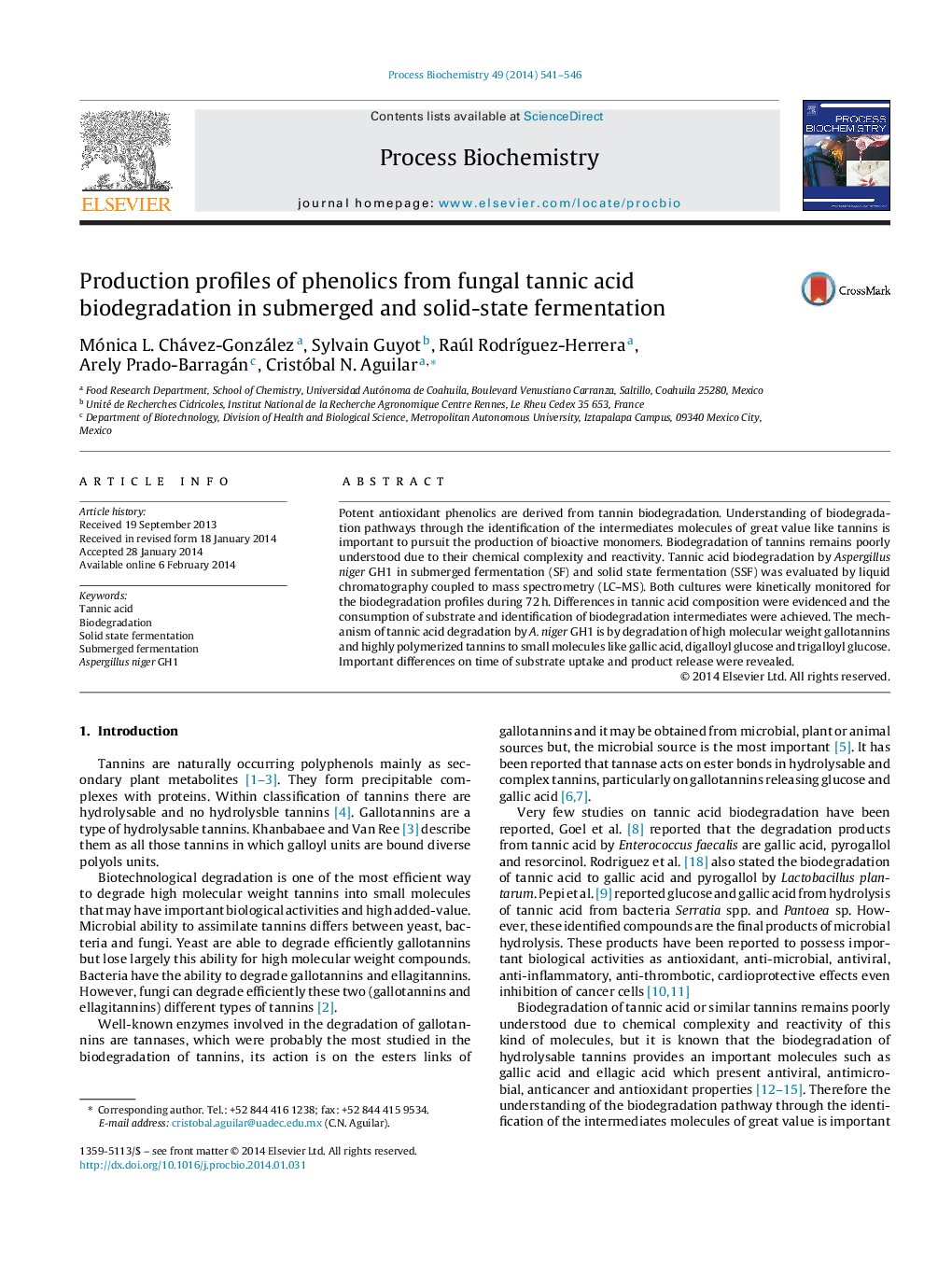| Article ID | Journal | Published Year | Pages | File Type |
|---|---|---|---|---|
| 34697 | Process Biochemistry | 2014 | 6 Pages |
•We identified the monomers released by fungal biodegradation of tannic acid in SF and SSF.•Potent bioactive phenolics were identified as intermediates of tannic acid biodegradation.•Kinetic differences in substrate uptake and product release were found.•This is the first work on tracking in monitoring intermediary molecules during the microbial hydrolysis of tannic acid.
Potent antioxidant phenolics are derived from tannin biodegradation. Understanding of biodegradation pathways through the identification of the intermediates molecules of great value like tannins is important to pursuit the production of bioactive monomers. Biodegradation of tannins remains poorly understood due to their chemical complexity and reactivity. Tannic acid biodegradation by Aspergillus niger GH1 in submerged fermentation (SF) and solid state fermentation (SSF) was evaluated by liquid chromatography coupled to mass spectrometry (LC–MS). Both cultures were kinetically monitored for the biodegradation profiles during 72 h. Differences in tannic acid composition were evidenced and the consumption of substrate and identification of biodegradation intermediates were achieved. The mechanism of tannic acid degradation by A. niger GH1 is by degradation of high molecular weight gallotannins and highly polymerized tannins to small molecules like gallic acid, digalloyl glucose and trigalloyl glucose. Important differences on time of substrate uptake and product release were revealed.
